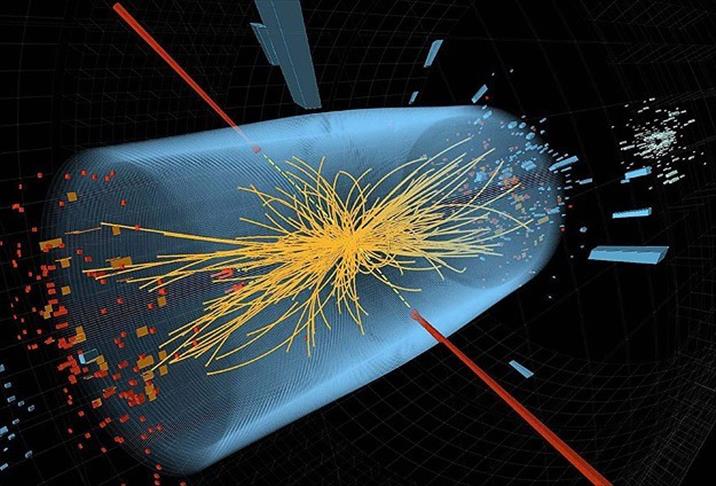CERN discovers new particles called 'pentaquarks'
European Organization for Nuclear Research scientists claim discovery of new kind of sub-atomic particle

GENEVA
The European Organization for Nuclear Research (CERN) has announced Tuesday the discovery of a new class of particles known as pentaquarks.
After 50 years of experimental research, CERN scientists in Switzerland claimed the discovery of pentaquarks, a new kind of sub-atomic particle.
"The pentaquark is not just any new particle. It represents a way to aggregate quarks, namely the fundamental constituents of ordinary protons and neutrons, in a pattern that has never been observed before in over fifty years of experimental searches," said LHCb (Large Hadron Collider beauty) spokesman Guy Wilkinson said in a statement.
"Studying its properties may allow us to understand better how ordinary matter, the protons and neutrons from which we’re all made, is constituted," Wilkinson added.
CERN noted that earlier experiments on pentaquarks had proved inconclusive.
In 1964, American physicist Murray Gell-Mann proposed that a category of particles known as baryons, which includes neutrons and protons, were comprised of three fractionally charged objects called quarks.
"This quark model also allows the existence of other quark composite states, such as pentaquarks composed of four quarks and an antiquark. Until now, however, no conclusive evidence for pentaquarks had been seen," CERN said in a statement.
The quarks are the ingredients of sub-atomic particles such as neutrons and protons.
The Large Hadron Collider - the world's largest and most powerful particle collider - is located in a 27-kilometer tunnel beneath the Swiss-French border near Geneva.
Anadolu Agency website contains only a portion of the news stories offered to subscribers in the AA News Broadcasting System (HAS), and in summarized form. Please contact us for subscription options.

